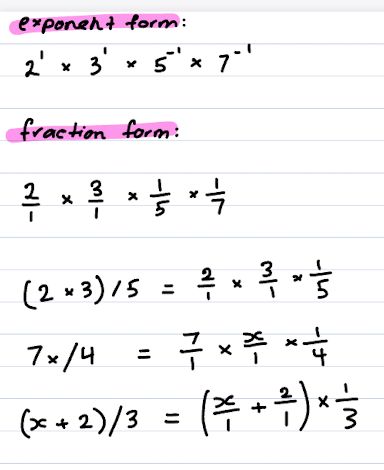Yeah, but do you know how to do that subtraction without calculating?
As in, just in my head? No I don’t think so reliably
The answer makes sense to me though, I don’t feel like I’ve just done a calculation and have an answer that I don’t understand.
I think I didn’t recognise 5x and x/3 as like terms, so I missed that I could subtract them when I tried to subtract x/3 from the expression in my working above.
If you have 5 pizzas and eat a third of a pizza, how many are left?
I think there’s something important here but that’s probably too long. Feel free to give up faster.
4 and 2 thirds of a pizza.
Yeah. So if you subtract 5x - (1/3)x, what’s that?
(4 + 2/3)x as a mixed number, (14/3)x as an improper fraction
So can you get that without calculating?
Were you missing the connection between x/3 and (1/3)x?
I may not understand what you meant by calculating. Would you consider what we have done thinking about pizzas not calculating? I thought by ‘without calculating’ you meant something like: intuitively in your head without clear steps, like when I see 5 x 5 I just know that’s 25. That’s what I thought when I then said to clarify “As in, just in my head?”.
If what we’ve done thinking about pizzas is what you mean by not calculating then yes I can, though I’d need to practise it more to be confident.
Were you missing the connection between x/3 and (1/3)x?
Yes, and I think this did have something to do with the fact I didn’t recognise 5x and x/3 as like terms.
Can you do the pizza thing immediately in your head or not? To me, subtracting a third from a whole number is a similar level of difficulty to counting (or adding or subtracting 1). Whereas converting 5x into 15x/3 looks to me like an extra step with more calculation.
Do you know that (2 * 3)/5 = 2 * (5/3) = 3 * (5/2)?
I can do the pizza thing immediately in my head. I didn’t recognise that I could think of 5x - x/3 as pizzas.
To me, subtracting a third from a whole number is a similar level of difficulty to counting (or adding or subtracting 1).
Yes, me too.
Do you know that (2 * 3)/5 = 2 * (5/3) = 3 * (5/2)?
No this is not clear to me.
Variables and units share a lot of the same properties.
OK so I’m not sure if there are any good resources you could find to explain this. But you need to understand fractions better.
\frac{2}{5} * \frac{3}{7} = \frac{3}{5} * \frac{2}{7}
Is that clear and does that help?
Also, here’s a non-standard explanation that may or may not help:
(2 * 3)/5 = 2^1 * 3^1 * 5^-1
which you may see as clearly associative and commutative in exponent form
Can I get you to check there isn’t a problem with this?
Because I can’t these equations to have the same answer using a calculator.
You’re right, it should be:
(2 * 3)/5 = 2 * (3/5) = 3 * (2/5)
Okay cool, then yes I understand that.
This is cool I like this.
It’s similar to your explanation earlier at LMD Async Tutoring - #57 by Elliot
so xn/yn is 4 things multiplied together, in any order: x, n, 1/y, 1/n. (for this, look at 1/y and 1/n as ways to write particular real numbers, not as indicating a division operation. they can be written in other ways without division, like 1/n might be the number 0.5 or 0.7 or some other number).
so you can take any two of the things you want to deal with, like n and 1/n, and multiply them first since order doesn’t matter.
\frac{2}{5} * \frac{3}{7} = \frac{3}{5} * \frac{2}{7}
OK try taking this and rewriting it in exponent form where you separate all the non-one numbers.
Also, try writing it out in fraction form, where you separate each number/thing into a fraction where either the top or bottom is 1. That form is related to the exponent form:
x = x^1 = x/1
x^-1 = 1/x
Also do fraction form for (2 * 3)/5 and 7x/4 and (x+2)/3
Time: ~5mins

Yeah. Does that help clarify fractions? If so, you could do more linear equations with one variable.